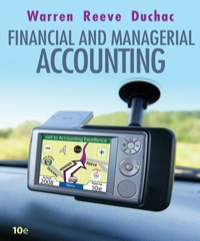Question
On January 1, 2019, Stalwart Asset Management Inc. (SAM), a publicly accountable entity, purchased 70% of Simpson Inc. (Simpson) for $500,000. On the acquisition date,
On January 1, 2019, Stalwart Asset Management Inc. (SAM), a publicly accountable entity, purchased 70% of Simpson Inc. (Simpson) for $500,000. On the acquisition date, the values of Simpson's retained earnings were $100,000 and common shares were $200,000, and the book values of its assets and liabilities were approximately equal to their fair values, except for Simpson's inventory and plant, property, and equipment. Simpson's inventory had a book value that was $15,000 more than its fair value, while its property, plant, and equipment had a fair value that was $40,000 greater than its book value. All inventory on hand at the acquisition date was sold to external parties during 2019. The following intercompany transactions occurred during 2019 and 2020:
1. SAM sold equipment to Simpson on January 2, 2019, at a loss of $20,000. This equipment had a remaining useful life of five years on the date of the intercompany sale.
2. During 2019, Simpson sold $16,000 worth of inventory to SAM. All of this inventory was sold to external parties in 2020.
3. During 2020, SAM sold inventory to Simpson for a sales price of $50,000. One-half of this inventory was still in Simpson's warehouse at the end of 2020, and the remainder was sold to external parties late in 2020.
All inventory sales (including intercompany) provide the seller with a markup of 25% above cost. Both SAM and Simpson are subject to tax at a rate of 30%.
SAM currently uses the equity method to account for its investment in Simpson in SAM's separate (non-consolidated) financial statements. Simpson is the only investment over which SAM has control the remainder of SAM's investments are non-strategic investments. The main user of SAM's separate financial statements is its bank, with whom SAM has a large operating loan. All other users rely on the consolidated financial statements.
Required:
a) Determine the amount of goodwill that SAM should record in its consolidated statement of financial position on the acquisition date. (3 marks)
b) Prepare a schedule of realized profits and/or losses that should be recorded in SAM's consolidated financial statements for the years ended December 31, 2019, and December 31, 2020, related to the three intercompany transactions listed above. Show all amounts before and after taxes. (5 marks)
c) Prepare a schedule of unrealized profits and/or losses that should be adjusted for in SAM's consolidated financial statements as at December 31, 2020, related to the three intercompany transactions listed above. Show all amounts before and after taxes. (2 marks)
d) Determine the amount of income tax that should be deferred on SAM's consolidated statement of financial position at December 31, 2020. (2 marks) e) Discuss the differences in the consolidation process that result from SAM's decision to record its investment in Simpson using the equity method of accounting, rather than the cost method. (2 marks)
f) Explain why SAM would choose to use the equity method to record the investment in Simpson, and also why SAM might want to consider using the cost method. Recommend to SAM's management which of the two methods they should use to record the investment in Simpson, and explain why. (4 marks)
Step by Step Solution
There are 3 Steps involved in it
Step: 1

Get Instant Access to Expert-Tailored Solutions
See step-by-step solutions with expert insights and AI powered tools for academic success
Step: 2

Step: 3

Ace Your Homework with AI
Get the answers you need in no time with our AI-driven, step-by-step assistance
Get Started


